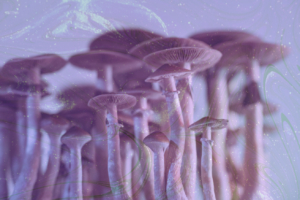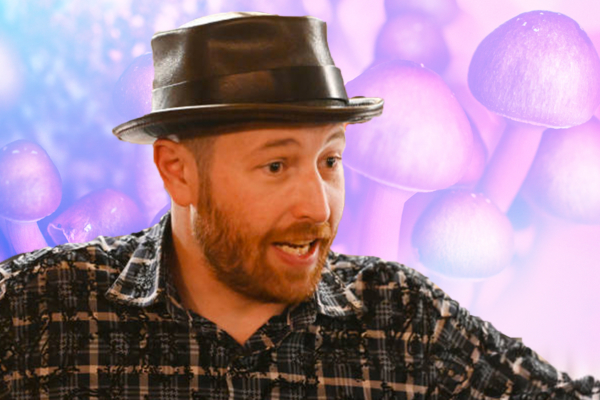
For psychedelics enthusiasts, it seems like news about the therapeutic potential of these drugs is popping up all over the place, from tweets by the world’s richest person Elon Musk to Netflix documentaries.
But are we just in an echo chamber?
A new study published in The Journal of Psychedelic Psychiatry has attempted to measure the change in public sentiment regarding psychedelics and the frequency of their mentions over time in American newspapers.
The author, Dax Oliver, examined both sentiment and mentions of psilocybin in four newspapers — The New York Times, The San Diego Union-Tribune, The St. Louis Post-Dispatch, and The Tampa Bay Times — from January 1, 1989, to December 31, 2020. The analysis found a rise in positive sentiment and an increase in the number of articles mentioning psilocybin only occurred in one newspaper, The New York Times.
However, the author acknowledged the methodological challenges of the study and recommended further research. Based on the findings, Oliver concluded: “The results might be a warning to psilocybin advocates that their optimism about public perception could be premature. If psilocybin advocates are mostly discussing psilocybin with each other, rather than discussing it with people outside of their communities, they have developed a mistaken impression of how many people have accepted its use.”
But leaders in the psychedelics space disagree.
“I do think the public is being exposed to the therapeutic potential of psychedelics now more than ever before,” Canadian Psychedelic Association founding member Trevor Millar tells Psychedelic Spotlight.
“People barely turn to newspapers for news anymore. They turn to podcasts, blogs, YouTube, social media, and so on, and it’s tough to deny that more and more of those are focusing on psychedelics. Try and watch a Joe Rogan podcast without the mention of DMT, and you’ll see what I mean.”
He adds that the study was a valiant effort, but its small sample size limited it. “The change in media landscape overall since 1989 means that sampling four newspapers is not going to provide a very robust data set,” Millar says. “However, the increase in positive mentions from The New York Times is a big signal worth noting.”
Multidisciplinary Association for Psychedelic Studies (MAPS) Policy and Advocacy Director Natalie Lyla Ginsberg adds: “People from outside our bubble are definitely getting interested.” She tells Psychedelic Spotlight that MAPS is now working with a lot more people from outside the psychedelic world, for example, those from a business background.
“When there was much less mainstream understanding, acceptance, and legitimacy of psychedelics, this prevented people from speaking publicly outside of their group. Now there is so much more research and leaders in our society who support this work (both Republicans and Democrats), I’m seeing far more people be open about their interest in psychedelics,” she explains.
She adds that the decriminalization movement across the United States, particularly Oregon decriminalizing drug possession and legalizing supervised psilocybin sessions, has allowed people to speak more openly about psychedelics. “As the War on Drugs is shifting, there’s more understanding about the need to end the incarceration of people for drugs.”
Having worked at MAPS for the past seven years, Ginsberg suggests that the public perception of psychedelics has shifted so dramatically in recent years that it was not fair to evaluate changes between 1989 to 2020 in one group, as was done in this study.
“Of course, we will have dramatically different experiences in the early 90s than even in the last three years,” she says. “Take the new TV show Nine Perfect Strangers starring Nicole Kidman. So many people are watching this who have never dreamt of psychedelics, and it is normalized as part of the plotline — both normalized and simultaneously contributing to certain fears and stereotypes around psychedelic use.”
However, she notes that the author’s use of newspaper coverage provided an interesting baseline. “They speak to an older, more mainstream, and more conservative audience,” Ginsberg says.
She adds that the pandemic accelerated the spread of psychedelic knowledge to the public. “Sadly, people were suffering during the pandemic and searching for alternative ways of healing,” she explains. “Psychedelic experiences themselves require time and space — the pandemic allowed more people the time to have an intentional journey with a focus on self-exploration, instead of using these substances in a party context.”
“There was a big shift even before the pandemic with certain touchpoints such as Michael Pollan’s book (How to Change Your Mind, published in 2018).”
But there’s still a long way to go to unleash psychedelics’ full potential, Millar says.
“The #thankyouplantmedicine movement and other efforts to have people ‘come out of the psychedelic closet’ are good ways to tip the scales,” Millar explains. “The plural of anecdote is not data, but it’s stories that change minds and hearts.”
“With the hundreds of people I have seen change their lives with these substances, I’ve still got tremendous hope that this is one of the most important ways we could change the world for the better. Let’s make sure we do step out of any siloed echo chambers we might occupy and get this news out to the masses.”
He adds that it has been great to see advocacy work being carried out by people on the conservative side of the political spectrum. “This is a bipartisan issue, and I love seeing the veteran community and their supporters get behind this type of healing as well.”
Ginsberg agrees that narrative and storytelling are the most powerful way to give the public a good understanding of psychedelics. “We need to encourage people who do feel comfortable speaking about psychedelics to talk to their classmates and colleagues, building it out a little bit person by person,” she says.
She also highlights the importance of being mindful about whose stories are shared. “In the earlier days of our work, it was mostly white, male leaders who felt safe to speak openly about drug use and drug research,” she explains. “We need to have intention around the different stories being shared so as wide a variety as possible of people can find a connection.”





